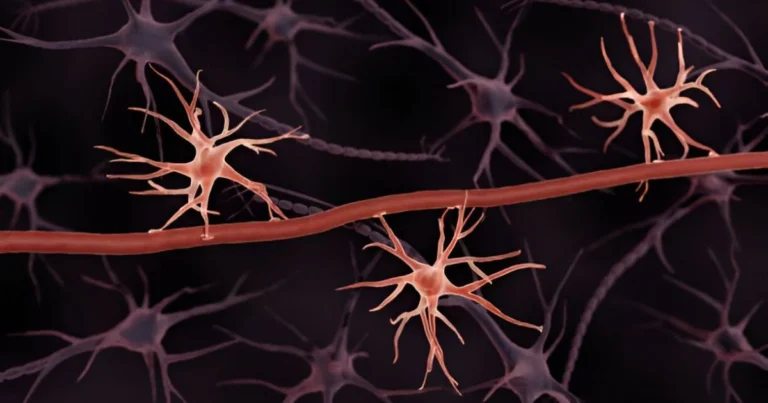Enduring benefits: The Transgenerational influence of exercise
The influence of physical exercise on our well-being is a widely studied topic in the health sciences. There is compelling evidence that regular activity enhances physical fitness, mental health, and even longevity. However, an intriguing new question has emerged: could these benefits extend beyond the individual who exercises, potentially influencing the health of future generations? This concept, both fascinating and largely unexplored, falls under the field of transgenerational inheritance of behaviors and habits. Given that physical activity can produce long-lasting effects on the body, the possibility that these effects might be passed down to descendants carries profound implications, not only biological, but also societal.
A 2024 study led by José Luis Trejo and his team at the Cajal Institute in Madrid, published in The Journal of Neuroscience, delves into this question by investigating how physical exercise in one generation of mice affects the cognition of subsequent generations. This research moves beyond traditional studies of short-term exercise benefits, revealing that physical activity’s advantages are not limited to those who engage in it directly, but can be transferred to offspring through subtle molecular changes at both the genetic and epigenetic levels.
From ancestors to offspring: the hidden cognitive gains of physical activity
The researchers conducted a series of experiments on laboratory mice, divided into multiple groups to analyze the effects of exercise over three consecutive generations. They began by exposing one group of adult mice (the grandfathers) to moderate physical activity, involving daily treadmill sessions for six weeks, equivalent to regular exercise in human terms. Another group of mice (the controls) remained inactive.
Following this exercise period, the mice were bred to produce the F1 generation (the parents of the “grandchildren”). The F1 mice did not undergo any exercise regimen. Next, a third generation, the F2 mice, or grandchildren, was produced from the F1 generation and tested for cognitive performance, focusing on memory and learning capabilities.
The results revealed that F2 mice with grandfathers (F0) who had exercised outperformed the F2 descendants of sedentary grandfathers. In particular, the F2 mice from the exercise group demonstrated a superior ability to recognize new objects and recall the position of an object in their environment. These findings suggest that physical exercise in the F0 generation led to changes in the F2 mice’s brains, enhancing their cognitive abilities even without their own exercise training.
The results showed that mice whose grandfathers had exercised performed better than those whose grandfathers remained sedentary.
The research team also investigated the biological mechanisms behind this phenomenon. They analyzed molecular alterations in the F2 mice’s brains by examining the expression of certain molecules called microRNAs, which regulate gene expression and play a pivotal role in neuroplasticity, the formation of new neural connections. The study showed that the grandfathers’ exercise routine modified the expression of these microRNAs in their sperm cells. These epigenetic changes were then passed on to the F2 generation, influencing how memory- and learning-related genes were expressed in their brains.
One particularly important microRNA identified in this study, miRNA-144, is involved in neurogenesis and the creation of new synaptic connections, processes essential for memory and learning. The grandfathers’ physical activity altered the expression of miRNA-144 and other microRNAs, ultimately improving cognitive performance in their grandchildren, even though the latter had never engaged in physical training themselves.
The physical activity of the grandfathers altered the expression of this microRNA, leading to improved cognitive performance in their grandchildren, even though they had never been exposed to physical training themselves.
While not yet fully understood, this phenomenon is rooted in epigenetic mechanisms, changes in gene expression that do not alter the DNA itself, but affect how genes are switched on or off. Exercise thus modifies not only the body but also, in subtle ways, the DNA in reproductive cells, enabling these modifications to be inherited by future generations. This discovery opens new perspectives on how exercise impacts brain health and demonstrates its transgenerational potential to influence cognitive function.
Exploring the inheritance of physical exercise in humans
José Luis Trejo’s study provides a groundbreaking glimpse into the long-term effects of physical activity on cognition, suggesting that these benefits may extend far beyond the individual who exercises. These findings surpass the conventional view of exercise as merely a tool for improving immediate physical fitness. Instead, they highlight exercise as a crucial factor for preserving cognitive abilities in the long run and preventing age-related cognitive disorders, an increasingly urgent global health concern.
As populations age and neurodegenerative diseases such as Alzheimer’s become more prevalent, developing strategies to prevent cognitive decline is paramount. The idea that physical exercise could offer protective benefits not only for those who engage in it, but also for their descendants, opens up innovative possibilities for research and public health policy. If we can deepen our understanding of how exercise influences cognitive health across generations, it may become possible to design prevention programs based on physical activity, programs that improve the health of individuals and potentially benefit future generations as well.
Trejo and colleagues’ study is the first to clearly demonstrate that physical exercise can have transgenerational effects, influencing memory and cognitive skills not only in the exercising generation but in their grandchildren as well. These findings imply that exercise, far from being solely an avenue for personal improvement, could emerge as a public health practice with profound and lasting repercussions for multiple successive generations. Such a perspective could reshape our approach to lifestyle habits, elevating them to practices that not only yield individual gains but also confer societal benefits.
Although these discoveries are compelling, further validation is needed. The biological mechanisms underlying these effects may differ between mice and humans, even if some aspects prove similar across species. Epigenetic changes observed in mice, particularly those involving microRNA expression, cannot be directly extrapolated to humans. Consequently, additional research in human populations is essential to confirm these transgenerational effects and to explore how these findings might be harnessed for sustainable prevention strategies on a global scale. Despite these challenges, the study marks a significant advance for public health research, especially regarding the prevention of cognitive disorders.
Ongoing investigations in humans are vital for confirming the existence of similar mechanisms and determining how exercise could become a long-term preventive tool. By influencing the inheritance of cognitive health, exercise has the potential to revolutionize current prevention strategies, transforming physical activity into not only a path to maintaining personal fitness, but also an investment in the well-being of generations to come.







